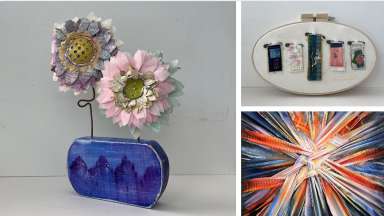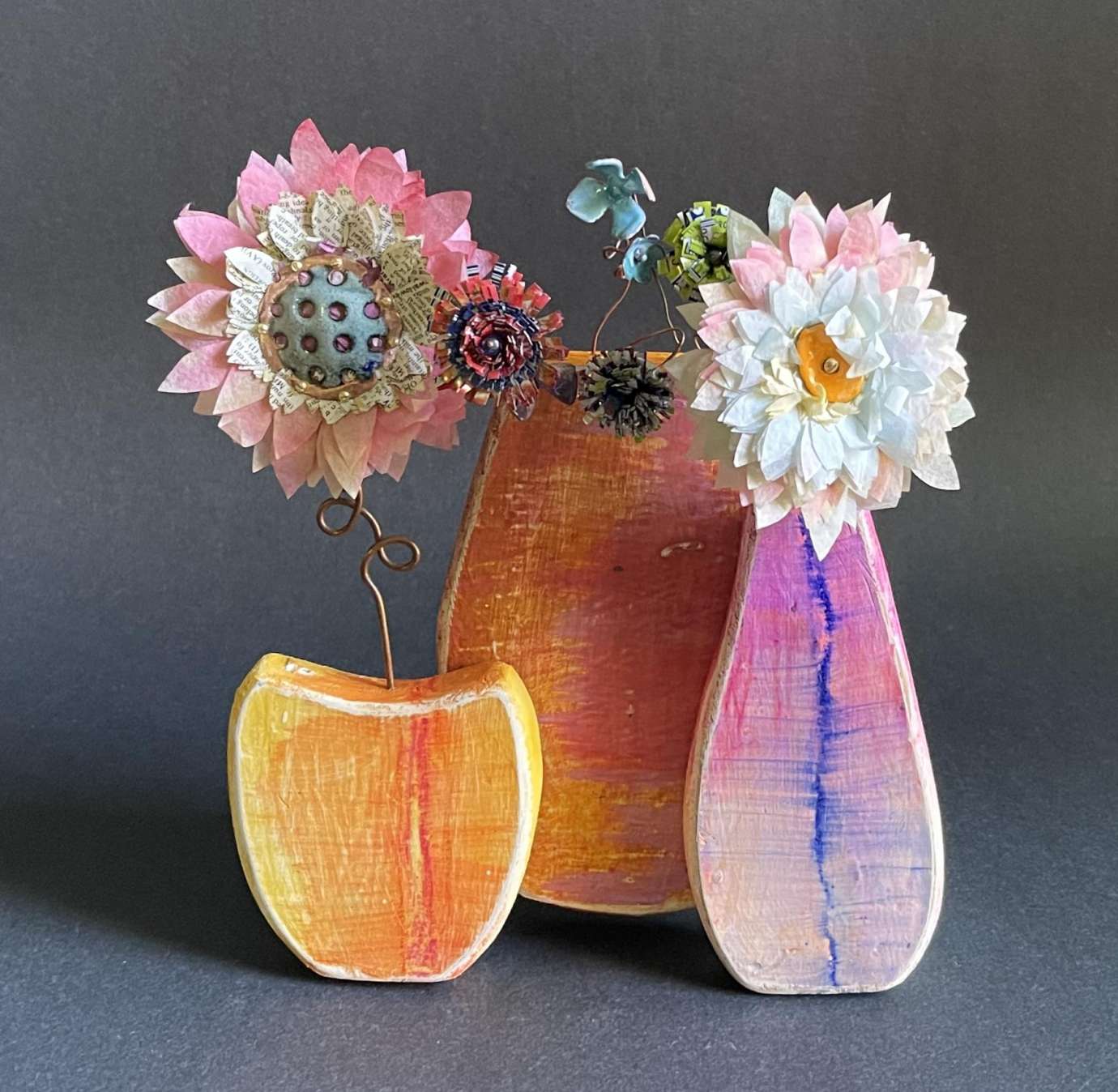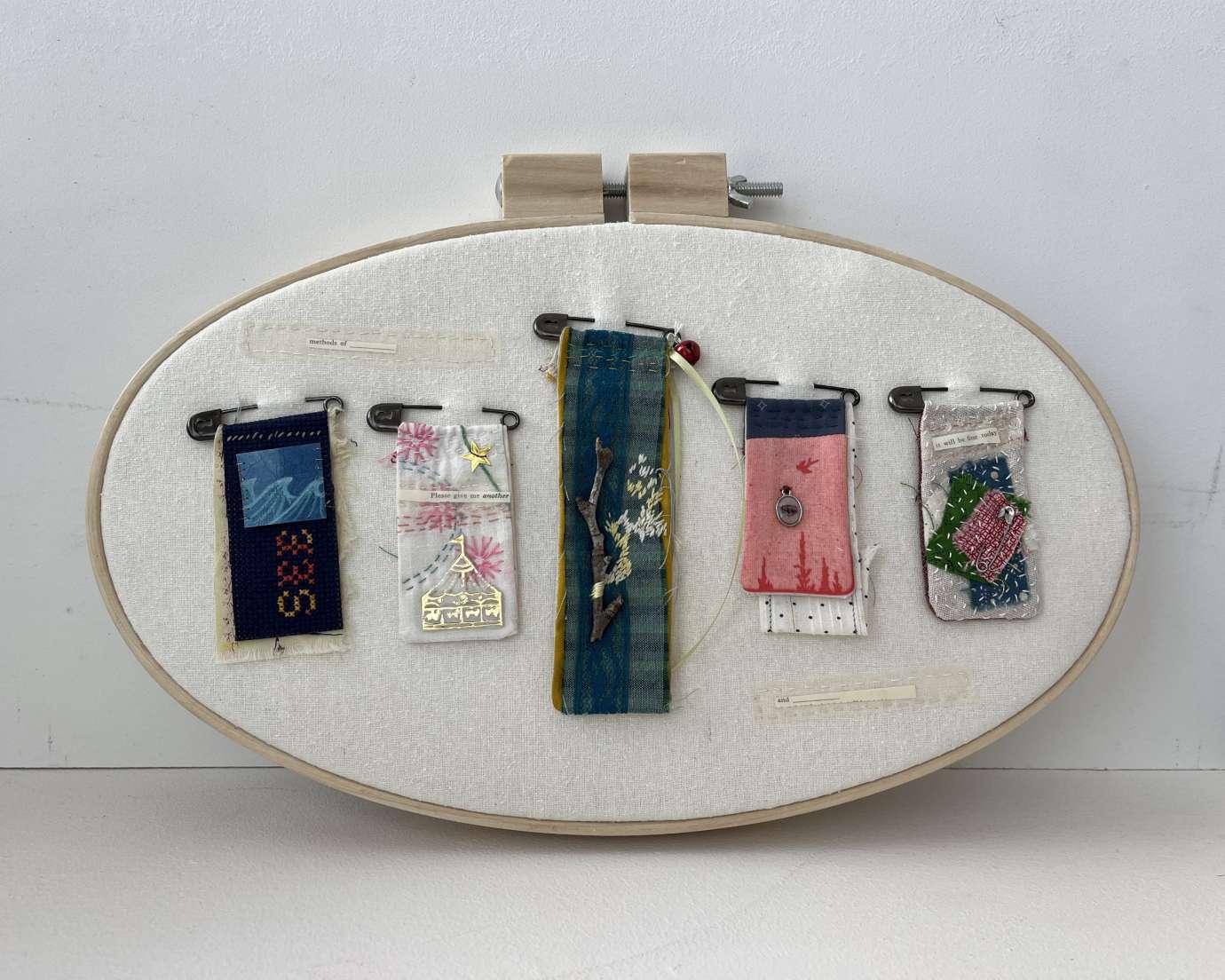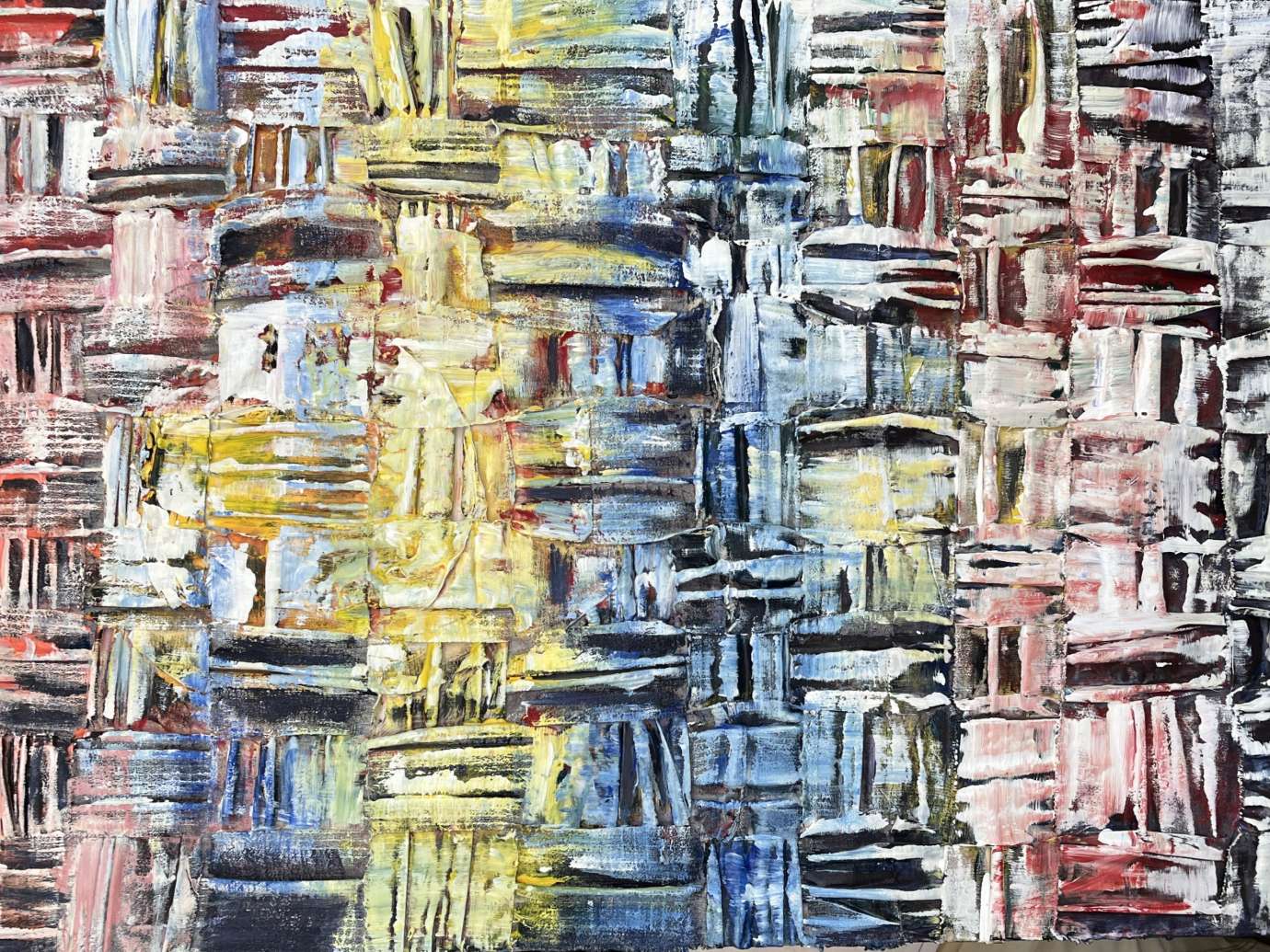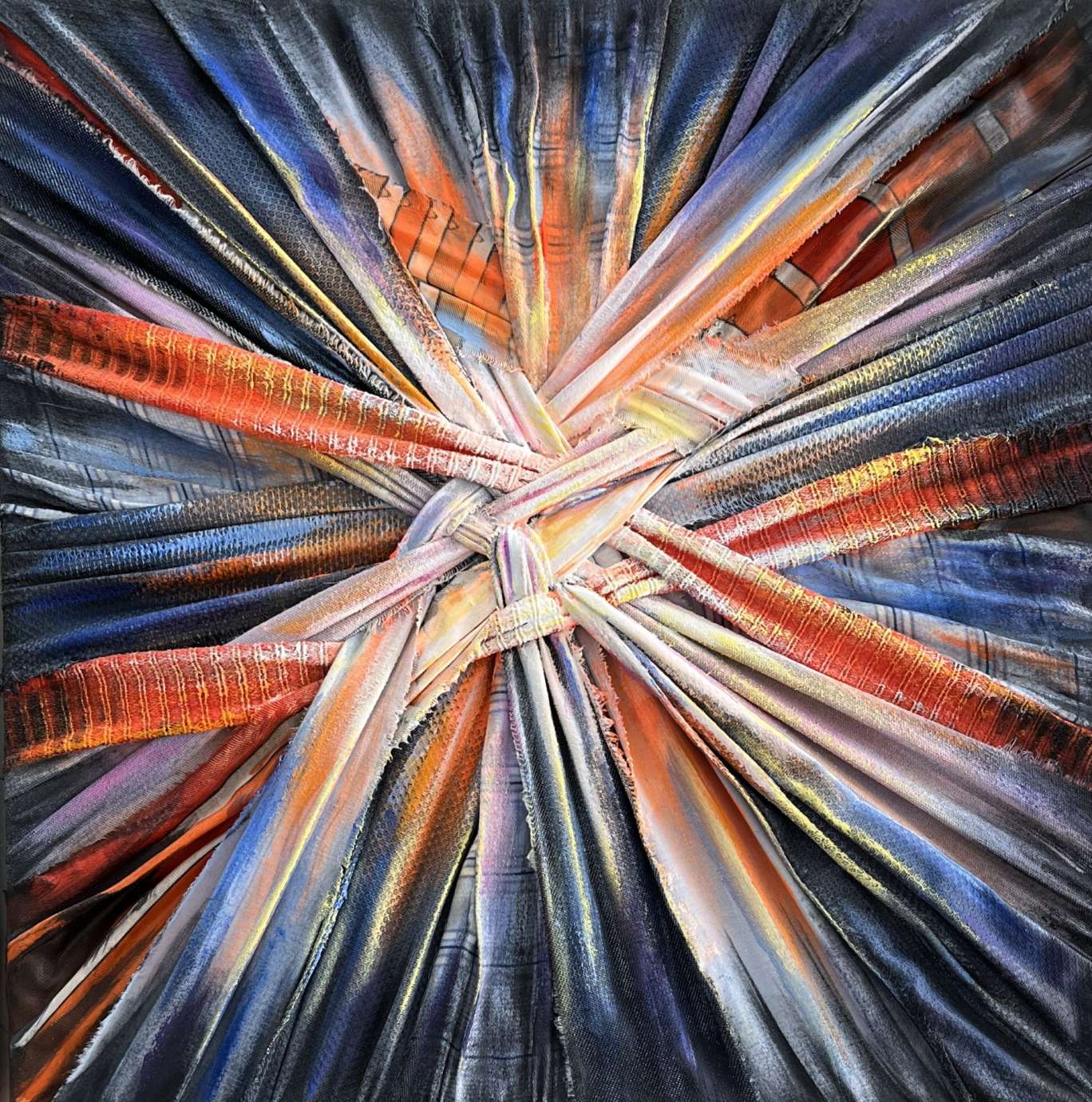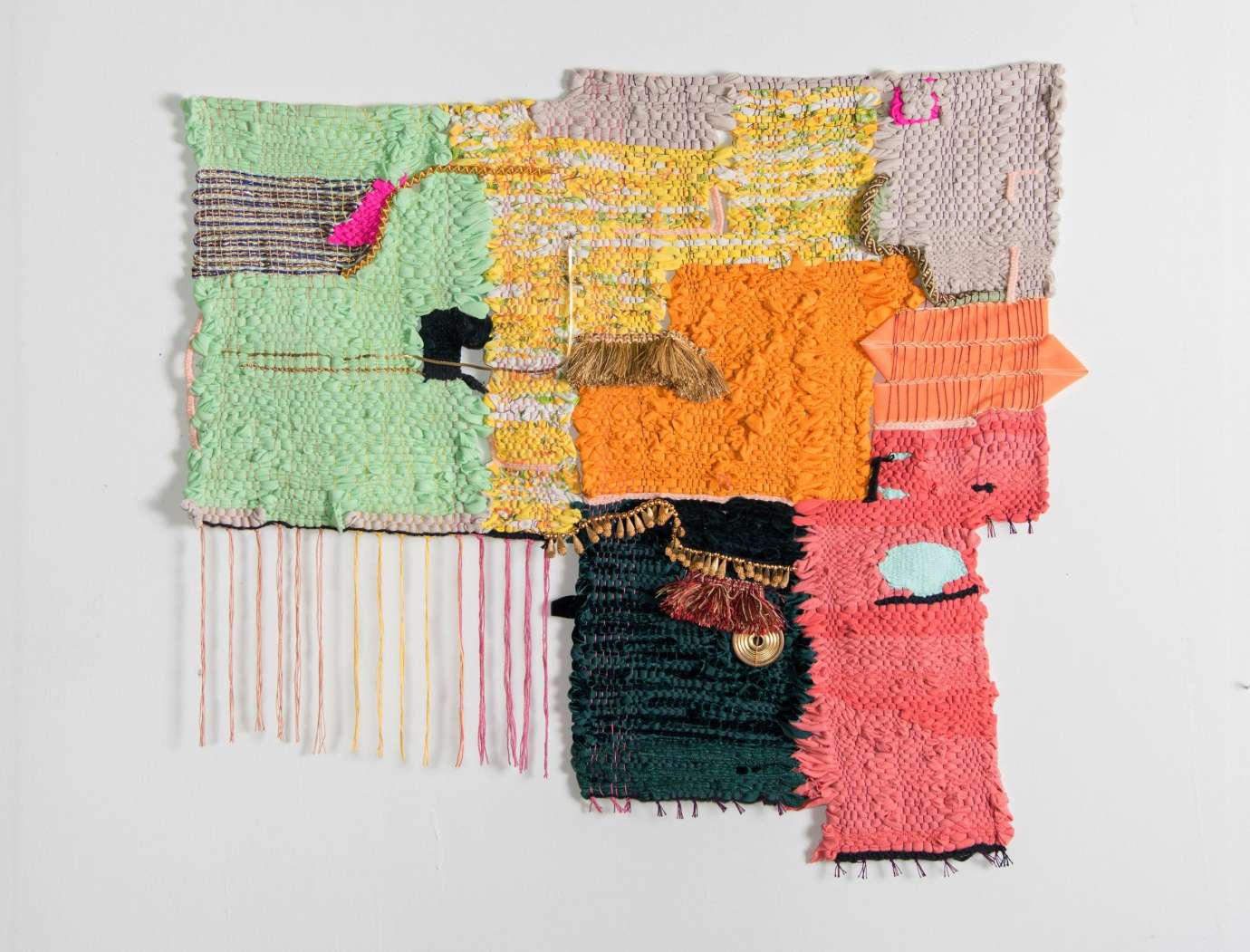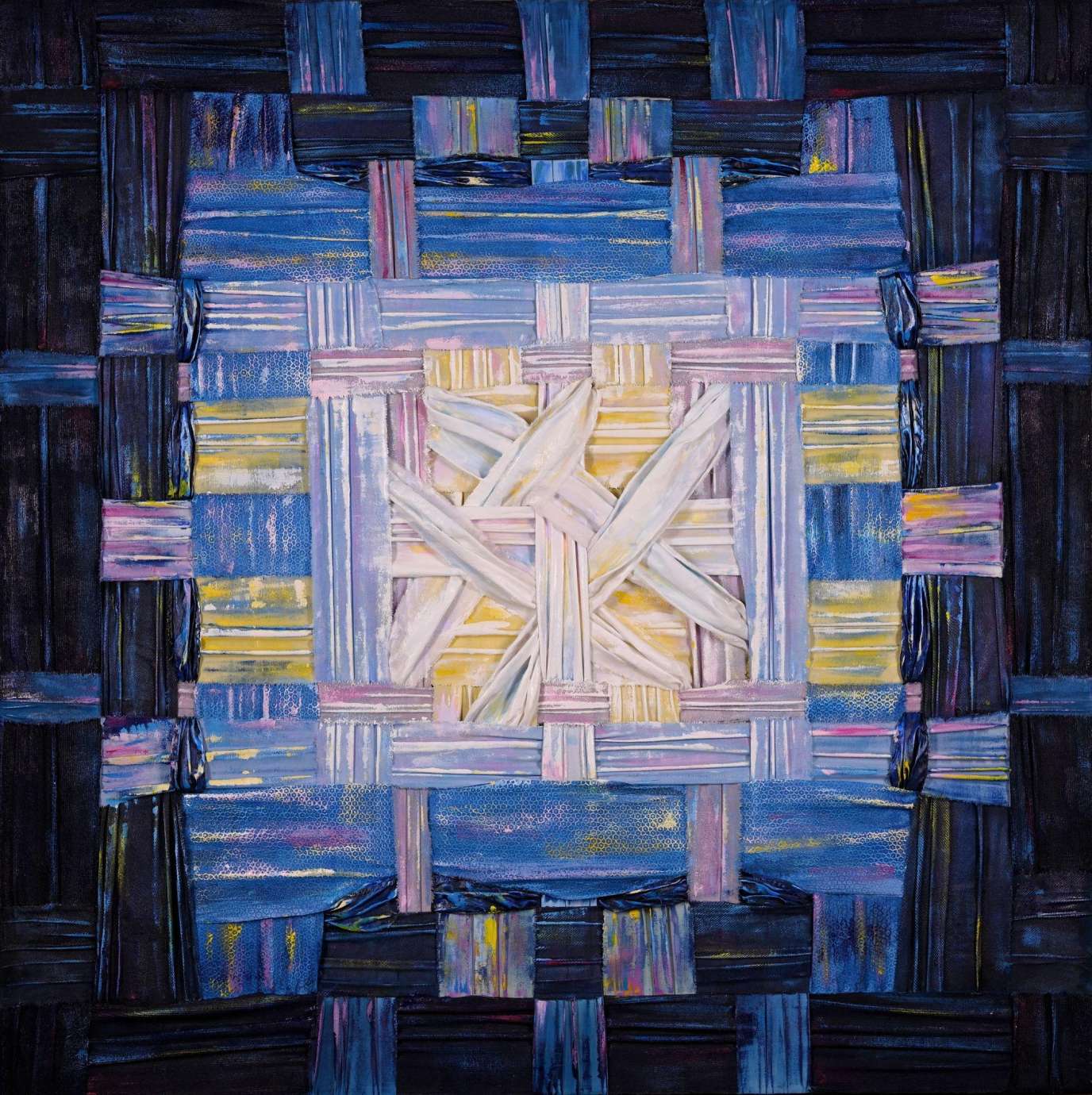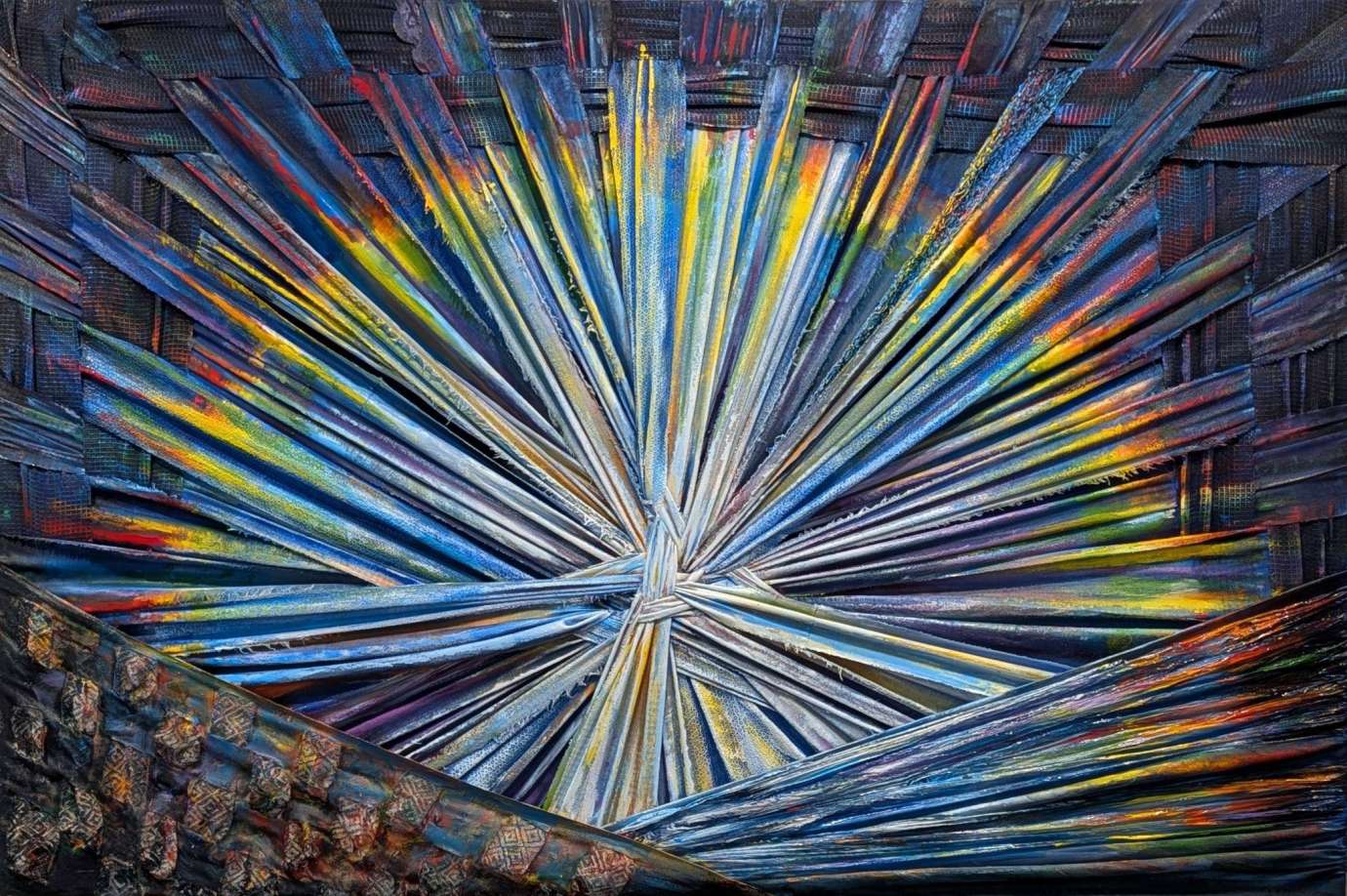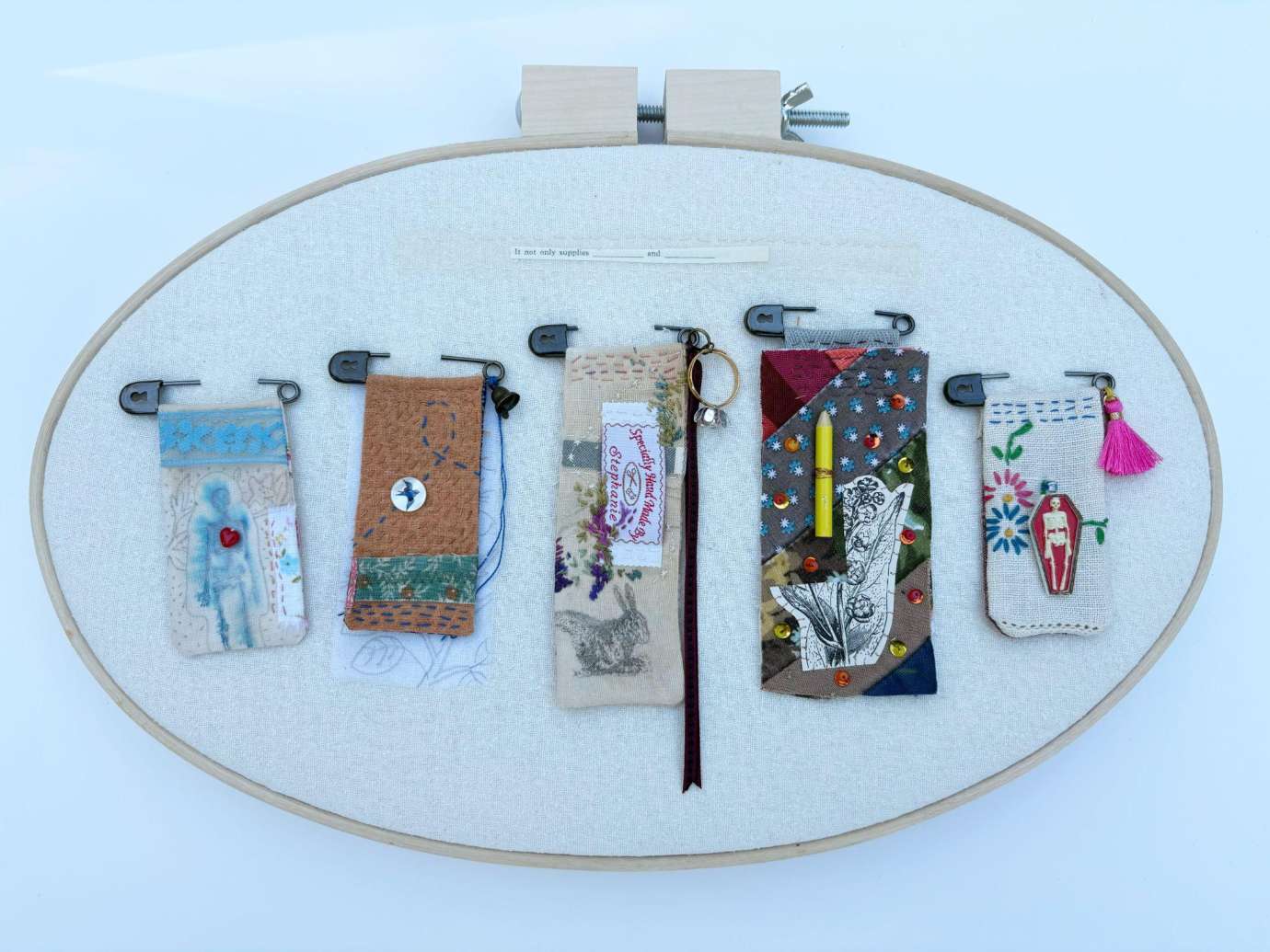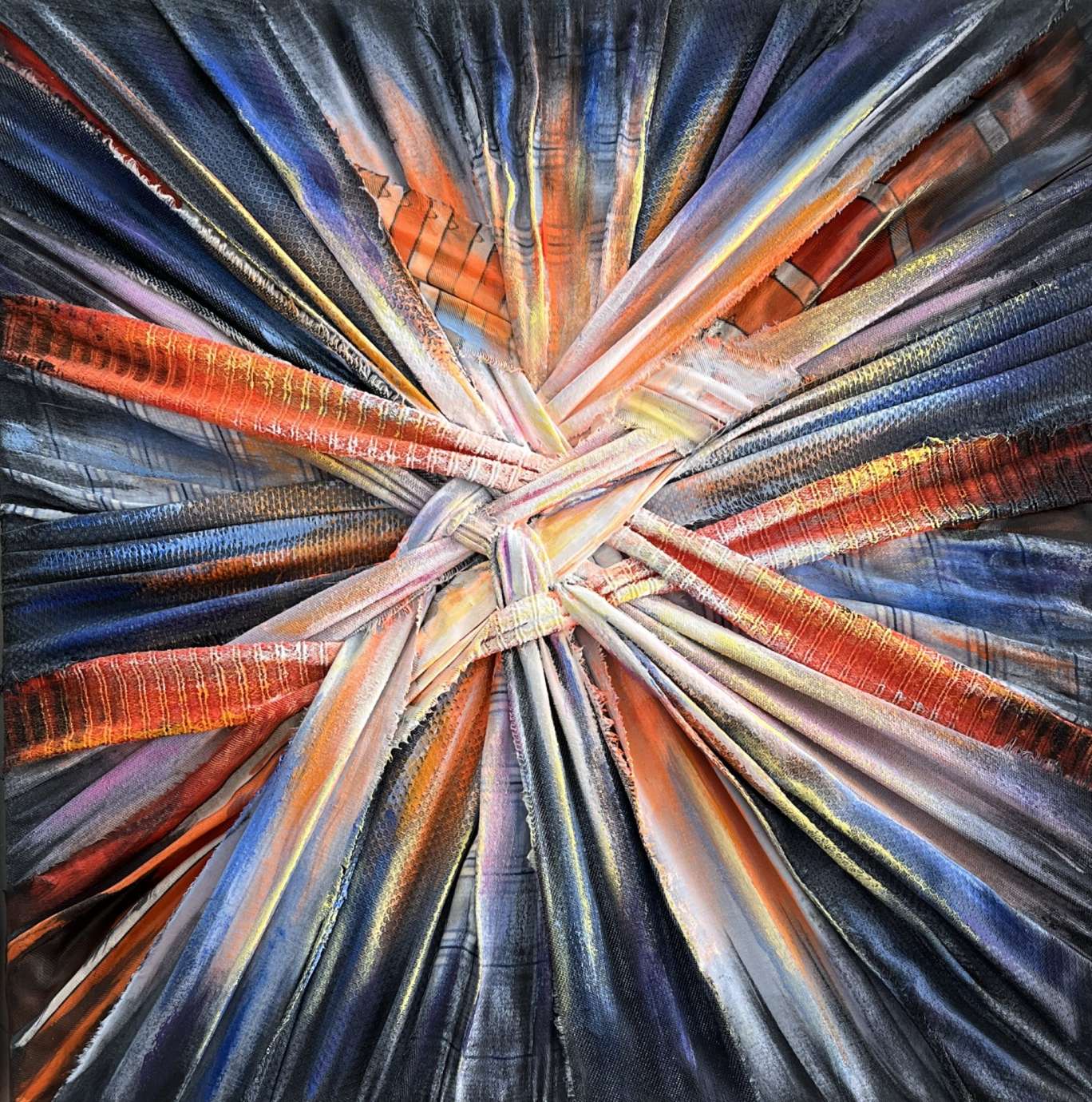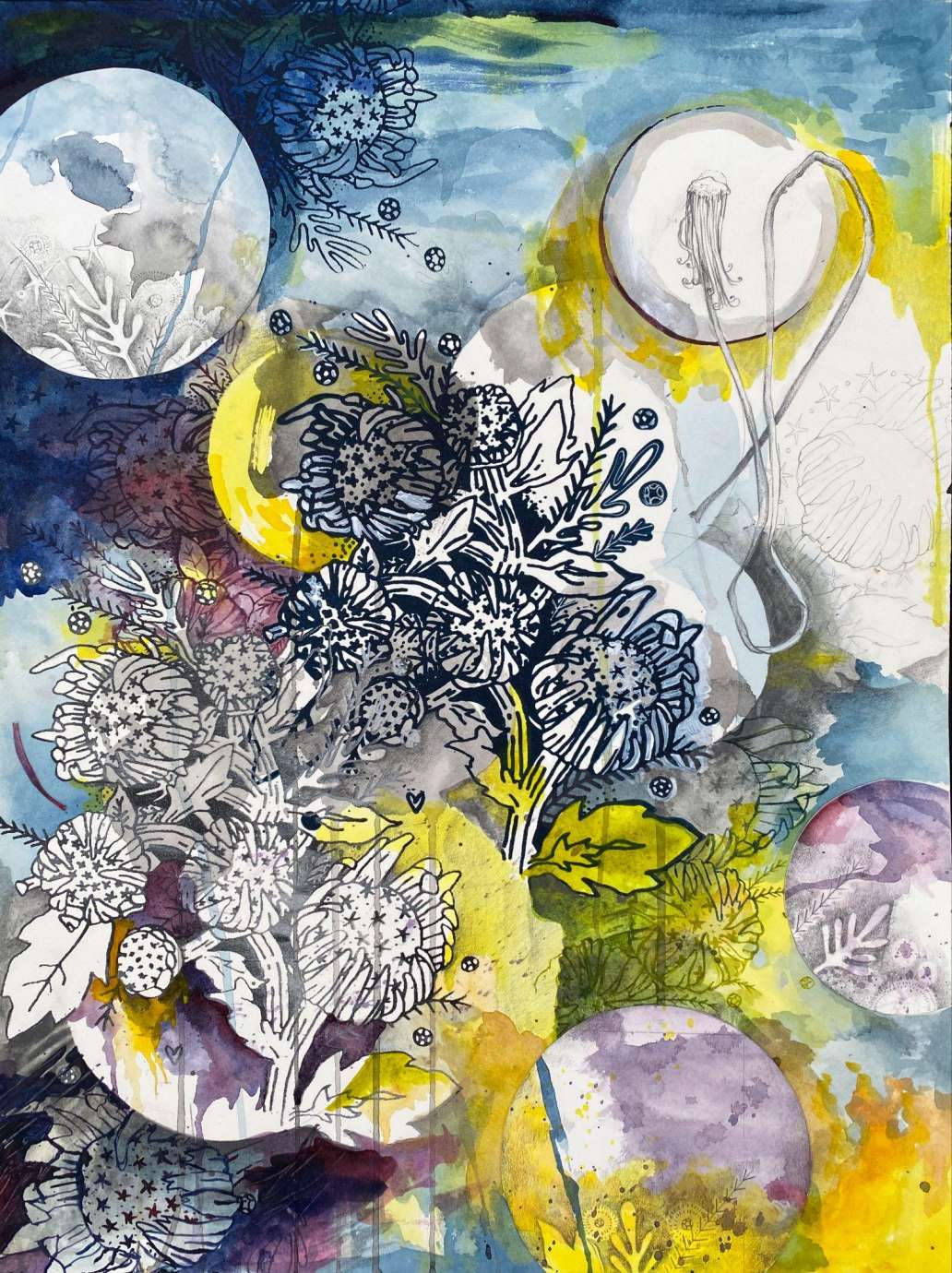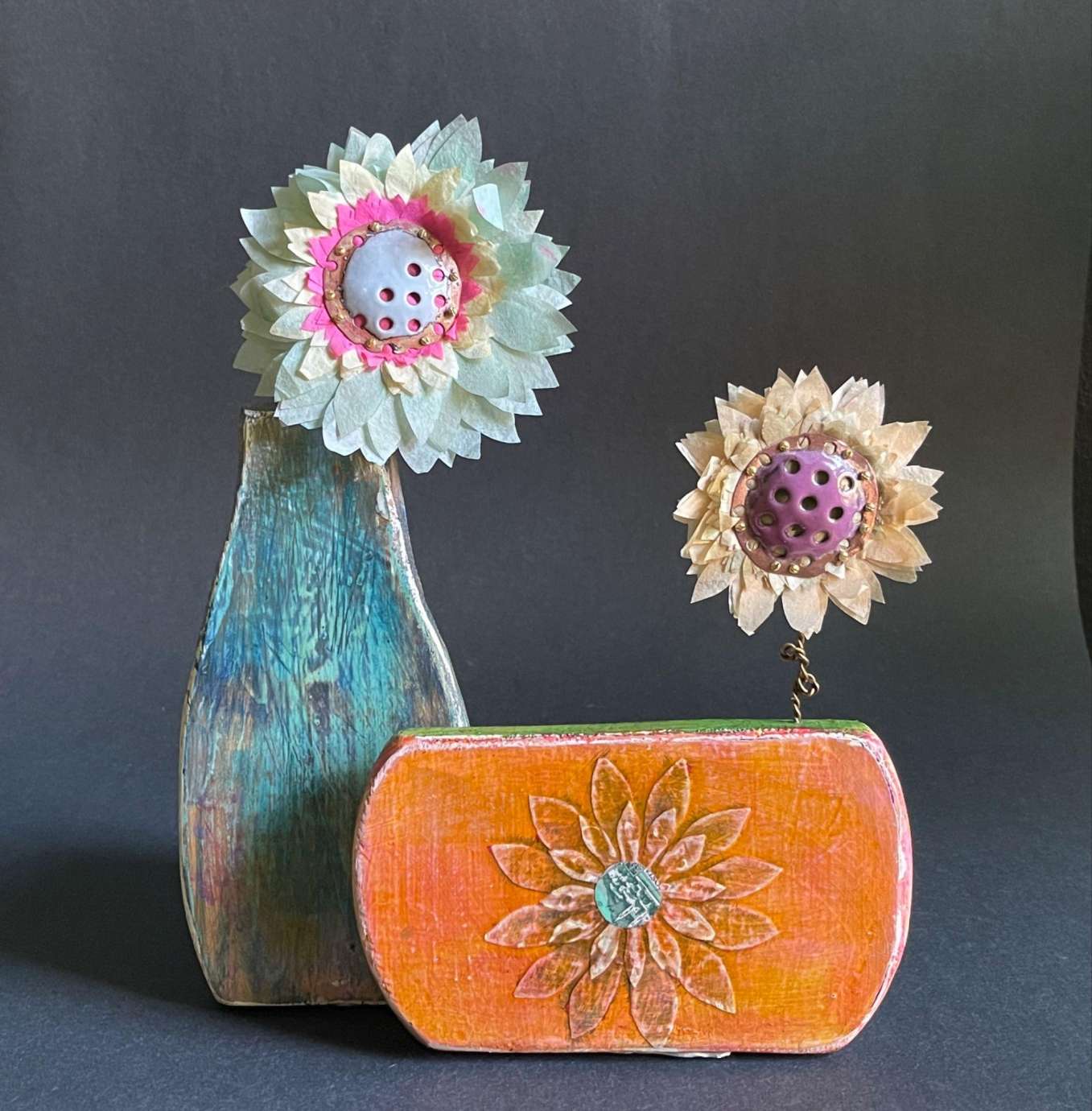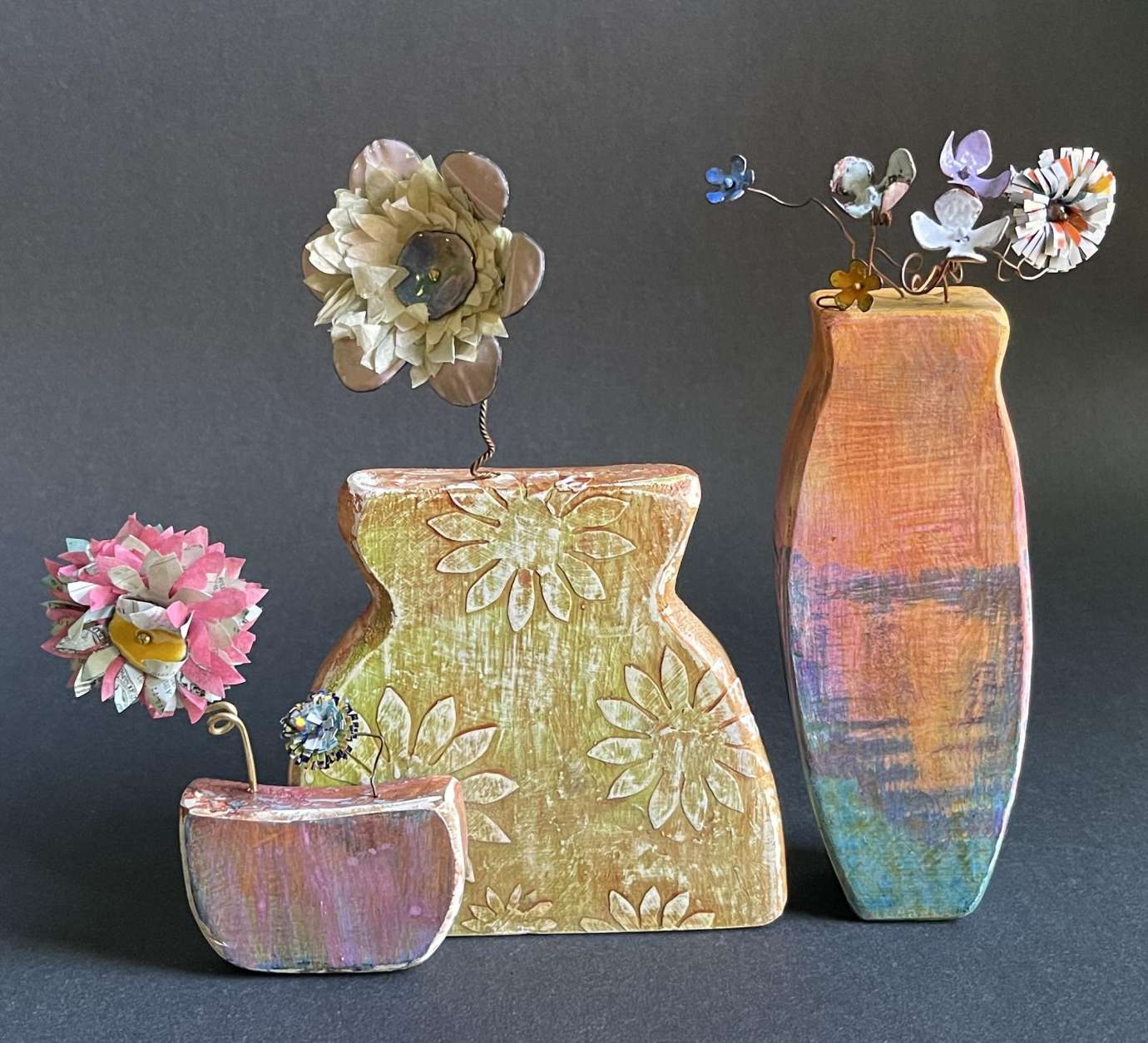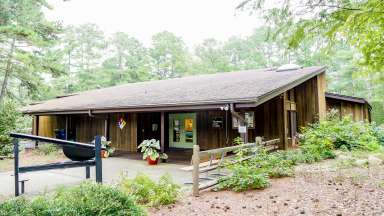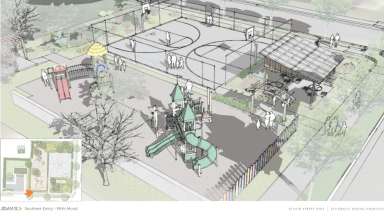Jump To:
Found and Formed
May 3-July 27, 2025
"Found and Formed" showcases the use of reclaimed, reused, recycled, second-hand, and found materials in art. The exhibition features local artists Kelsey Merreck Wagner, Debbie Secan, ndidi kowalczyk, Karen Christie, Sterling Bowen, Stephanie Witchger, and Andrea Vail.
The artwork will be on display from May 3 - July 27, 2025.
- Location: Pullen Arts Center, 105 Pullen Rd., Raleigh, NC 27607
- Parking: Visitors must have a parking permit between 7 a.m. and 5 p.m., Monday through Friday. Check-in at Pullen Arts Center’s front desk for a license plate-based parking permit. View our parking map
- Cost: Free and open to the public
- Hours:
- Monday-Thursday, 9 a.m. - 10 p.m.
- Friday, Closed
- Saturday & Sunday, 9 a.m. - 5 p.m.
- To purchase artwork, contact Pullen Arts Center for details.
Closing Reception
Meet the artists, learn about their work and creative processes, and enjoy an afternoon of community at Pullen Arts Center on Saturday, July 26, from 2:30-4:30 p.m. at our free closing reception.
Sterling Bowen
Artist Statement: Sterling Bowen is first and foremost an abstractionist. He is primarily interested in the value that contemplation has in our contemporary society, and in foregrounding contradictions, such as a painting which is an image and an object, that encourage viewers to recognize the possibility of holding conflicting truths simultaneously. The materials used for this work are primarily made of “waste” diverted from landfills. Landfill gas- mostly methane- is a natural byproduct of the decomposition of organic material such as wood waste in landfills and a potent greenhouse gas. The intention of arranging the materials so viewers must look through the layers of paint and glass in the work is to posit the possibility of passing “through” this time of (climate) crisis, which is both a tragedy and an opportunity.
Artist Biography: Sterling Bowen studied art at UNCC as an undergraduate. His practice includes painting and installation work, as well as teaching, curating, and writing. He maintains a blog about his practice and other artists he finds interesting (www.sterlingbowen.com). During the day, Sterling works in clean energy. He is also a father of two who lives in Raleigh with his spouse. When not working, making art, or traveling, he plays basketball, watches science fiction, or works on his community.
Karen Christie
Artist Statement: From the earliest stained glass used in medieval cathedrals, stained glass has awed and inspired. Karen views vintage glass as a “glimpse into the past”, especially if stories from each piece of glass are also collected. Karen was inspired to search out examples of vintage stained glass when she was reflecting on how historical events often inform present-day issues. “The Present reflects the Past” includes pieces of 200-year-old glass from a cathedral window restoration, reflecting beauty of the past in a contemporary art project. Other pieces illustrate inventions, such as circa 1894 chicken wire glass used in industrial work sites, allowing daylight to penetrate inner rooms but preventing serious injury if the glass was broken. Finally, pieces from one of the largest stained glass windows ever fabricated were salvaged from the JFK airport, in New York (1960).
Artist Biography: Stained glass captivated Karen after she took a Beginner Class from a local artist studio in Toronto, Canada years ago. She has since created hundreds of commissioned pieces ranging from large architectural panels to tiny toppers for plant stakes. A versatile artist, Karen has trained in & taught traditional lead came fabrication as well as the more contemporary Tiffant-style copper foil approach. Her love of art & desire to add to the beauty in the world led her to open a Teaching Studio where she helps students master the skills needed to put their own unique vision into each piece. Karen resides in Raleigh, NC
ndidi kowalczyk
Artist Statement: This call resonated with ndidi and her connection with making art using a variety of overlooked supplies {It’s not hoarding if you eventually use it!}
Being a stream-of-consciousness maker, ndidi begins each project with a loose idea of what she will create. In this case, the finished work was most certainly going to be floral. She also knew for sure that her art would be 3-dimensional. During the “planning” stage she began gathering/collecting found metal, collision debris, vintage paper, postage stamps, buttons, discarded construction materials, enamel, wood, and pastel. This beginning was not intuitive but it was inspirational. The found-in-nature items were beautiful but had ndidi feeling as though she was trying too hard. She brought her material search back to her studio where a treasure hunt gave her a trove of forgotten raw materials: wood {pine} scraps, chalk pastels, coffee filters, recycled copper downspout, recycled copper gutter guard, scrap copper wire, Easter egg dye, and vintage book pages, aluminum cans, cardboard packaging.
wylde flawers, a collection of sculptural paintings, is the continuation of mixed media work ndidi has been creating for nearly 10 years. On average each painting or grouping is 9 X 9” or less. The shaped wood canvases are an evolution for her. The collection is light and happy. Her goal is to encourage viewers to dance out loud while enjoying this work.
Artist Biography: ndidi kowalczyk is a lifelong artist whose work is inspired by color, movement, texture, nature and the act of creating JOY! She is formally trained in textile design and surface printing. When her passion for the grand scale of six-foot screen prints needed to be downsized she channeled her love of color, movement, and texture into jewelry design. She truly enjoyed the marriage of sheet metal and fire but quickly realized her work lacked the color and vibrance she craved. ndidi soon discovered enamel which reignited, reinforced and reinvigorated her love of color. Her jewelry journey was ndidi’s primary artistic outlet until a creative block brought her making to a screeching halt. To keep herself producing art, ndidi pushed herself to find another medium to express her creativity. The only parameter: any new work must be fabricated from materials already at her disposal. The resulting work is ndidi’s mixed media paintings.
Debbie Secan
Artist Statement: Debbie Secan abandons the traditions of the weaving and painting worlds. In place of a traditional weaving loom and yarn to create her pieces, Debbie uses stretcher bars as a frame loom and weaves directly onto them, recycling fabric and other previously used materials into dimensional and pigmented canvases. She again abandoned textile traditions, and instead of using dye or textile pigments, she used acrylic paint to complete her woven paintings. While each of Debbie's paintings has their own individual origin story based on a landscape or an idea, the subject matter is always the physical process of gathering materials, weaving and painting. Debbie considers every woven painting to be a new experiment with material. Debbie wants to inspire the student artists at Pullen Art Center to both learn traditional skills and work fearlessly.
Artist Biography: Debbie Secan fell in love with weaving at age sixteen and has worked with woven structures ever since, as a handweaver, textile designer and visual artist. Debbie grew-up in Winston-Salem, North Carolina and currently lives in Raleigh. She has a Master of Art and Design from North Carolina State University. Her work has recently been included in shows at Cary Gallery of Artists, the Artscenter in Carrboro, The Imperial Center in Rocky Mount, The Art League of Henderson County in Hendersonville Golden Belt and Jewish for Good in Durham, The Art League of Hilton Headand and ArtFields in Lake City, NC. She can be found working in her studio at Artspace in downtown Raleigh.
Andrea Vail
Artist Statement: Andrea's work examines the cultural weight of American consumerism—its relentless pursuit of happiness through the accumulation of material goods—and its paradoxical emptiness. She explores the systems underpinning mass production, consumption, and the interplay between artifice and authenticity through research and practice. Hinged on textile traditions and techniques, her practice materializes as sculpture, installation, and collaborative exchange. Her knotless netted, sewn, and woven works connect people, objects, and the households from which they came, subverting both the materials' and the culture's isolative qualities and offering a counterbalance to throwaway culture.
Artist Biography: Andrea Vail is an interdisciplinary artist based in Western North Carolina, who explores textiles’ inherent collaborative nature in an increasingly disconnected world. She weaves tapestries and creates textile sculptures with discarded materials, often inviting community participation throughout the process. Her work has been exhibited nationally and internationally, and has received support through regional and state grants including North Carolina Arts Council, and residencies with Goodyear Arts, McColl Center for Art + Innovation, and Elsewhere Museum. Vail holds degrees in Visual Art from UNC Charlotte (BFA) and Virginia Commonwealth University (MFA).
Kelsey Merreck Wagner
Artist Statement: Kelsey Merreck Wagner’s ongoing series of weavings use plastic and recycled materials as both a material and conceptual approach/intervention. Every year, 500 billion plastic bags are used in landfills and clog the green spaces and waterways we share with all other beings on this earth. Even worse, plastic takes 20-500 years to decompose and has negative impacts on ecosystems throughout its lifespan. Additionally, waste from food packaging, fast fashion, housewares, electronics, and packaging materials means that everything we buy contributes to further pollution. Weaving is a historically place-based, locally specific practice grounded in cultivating local fibers, intergenerational knowledge, and using techniques and designs imbued with cultural importance. In this vein, her use of post-consumer waste plastics, fast fashion remnants, and the general refuse of humanity is conceptually significant. Her place-based weaving practice reflects her positionality as an American woman in a late-capitalist country, and her weavings represent the neoliberal conditions in which bans on plastic lag behind, recycling is marginally effective, and waste management infrastructure is insufficient and overwhelmed. Collecting recycled materials for these weavings is also an ethnographic project: each environmental clean-up or conversation with family, friends, and strangers donating plastic and old clothes sparks discussions about the plastic problem. Her hopes of raising awareness must be realized not only through exhibited work; the exchanges about our consumer behavior, recycling constraints, and environmental stewardship beforehand are just as important.
Artist Biography: Kelsey Merreck Wagner is a fiber artist, educator, curator, and anthropologist. She defines herself as an eco-artivist (art + activism). She received her B.A. (Studio Arts; focus: printmaking, community-engaged art) from Appalachian State University, and her Ph.D. from Michigan State University (Anthropology; focus: environmental activism and art). Since 2019, her ongoing body of work has been comprised of small and large-scale weavings made entirely from plastic and other recycled materials, which she collects from her household, community, and trash clean-ups. Her practice is both research-based and community-engaged, and centers collaborative art-making, encourages solidarity, and raises awareness about environmental issues. Her work has been exhibited in galleries, museums, and institutions: internationally in Cambodia, Thailand, Canada, and Italy; as well as across the United States in Illinois, Texas, Ohio, New York, North Carolina, and Michigan.
Stephanie Statham Witchger
Artist Statement: Stephanie Statham Witchger's work blends figurative and abstract elements in mixed media. She works with watercolor, graphite, paper, and thread. Each requires a gradual building up, which deepens her immersion in the company of the subjects and the marks she is putting down. When she works with them, she gains and loses time at once. She collects things from her everyday surroundings, then elevates them within a personal language of symbols. Here, she locks away everything she longs to hold more closely. Life is a tangle of questions she can't seem to answer nor put aside. Feelings contradict and confound us. How do we hold together our joy, sorrow, grief, and gratitude, all this nothing and everything? It is in the tensions between these opposites that Witchger finds the force to work. And it is in this work that she searches for peace with these tensions.
Artist Biography: Stephanie Statham Witchger was born and raised in the rural area outside New Bern, North Carolina. She set her sights on studying art before even starting elementary school, eventually attending East Carolina University's School of Art, and earning her BFA in Painting & Drawing. She now resides in Raleigh with her family and continues working to fit art into every pocket of time and life available. Her current practice includes drawing, painting, collage, embroidery, photography, finding tiny things, & reading.
